Furnaces play a crucial role in keeping our homes warm and comfortable during colder months. However, as technology advances and home heating solutions become more efficient, older furnaces might struggle to keep up. Recognizing the signs that indicate the need for furnace replacement is essential for maintaining an energy-efficient home.
Warning Signs Indicating Furnace Replacement
1. Inconsistent Heating and Temperature Fluctuations
Experiencing uneven heating or sudden fluctuations in room temperatures is a common sign that your furnace may be failing. This inconsistency occurs when certain areas of your home feel significantly warmer or cooler than others, despite the thermostat settings remaining unchanged. Such issues often indicate that the furnace is struggling to distribute air evenly, which could stem from mechanical failures or age-related deterioration. Addressing these symptoms promptly can help prevent further complications and maintain household comfort.
2. Unusual Noises and Odors from the Unit
Furnaces should operate quietly, with minimal noise. If you start noticing loud banging, clanging, or hissing sounds, this could indicate internal components are worn or damaged. Similarly, strange odors, such as burning or musty smells, are a potential red flag. These can suggest problems like dust accumulation or even more serious issues like electrical faults or gas leaks. Ignoring these warnings poses safety risks and often leads to more extensive repairs or replacements.
3. Increased Energy Bills Despite Regular Use
A spike in your energy bills, without a corresponding increase in furnace usage, is another indicator of inefficiency. As furnaces age, they become less efficient, requiring more energy to maintain the same level of heating. Such inefficiencies can lead to higher operational costs over time. Monitoring your energy bills for abrupt increases can help you determine when it’s time to explore heating replacement options.
Importance of Energy-Efficient Heating Systems
1. Benefits of Switching to Modern Systems
Modern energy-efficient heating systems offer numerous advantages for homeowners. They are designed to use less energy than older models, resulting in lower utility bills. Additionally, these systems often come equipped with advanced features like programmable thermostats and variable-speed motors, which further enhance their efficiency and performance. By investing in a high-efficiency system, you can enjoy consistent heating with minimal energy waste.
2. Environmental Impact and Energy Conservation
Choosing energy-efficient heating systems contributes positively to environmental conservation efforts. These systems reduce carbon emissions by utilizing energy more effectively and relying on cleaner fuel options. As a result, they play a part in minimizing the ecological footprint of your household. Opting for eco-friendly heating solutions demonstrates a commitment to sustainability and responsible energy consumption.
3. Improved Home Comfort and Cost Savings
Beyond energy savings, modern heating systems significantly enhance home comfort. They maintain a more consistent indoor temperature, eliminating hot and cold spots typically found with aging furnaces. Furthermore, efficient systems help lower maintenance costs and extend the overall lifespan of your heating system. With fewer repairs and greater reliability, homeowners can experience long-term cost savings while enjoying a comfortable living environment.
Comparing Repair Costs Versus Replacement Costs
1. Long-Term Savings with Replacement
Investing in a new furnace may seem daunting at first, but it often leads to significant savings in the long run. Older furnaces tend to be less efficient, consuming more energy and inflating utility bills. A modern, energy-efficient model reduces these costs, quickly offsetting the initial purchase and installation expenses. Furthermore, manufacturers frequently offer warranties that cover parts and labor for several years, adding value and peace of mind.
2. Evaluating Frequent Repair Costs
When repair calls become frequent, it’s time to weigh the costs. Constantly fixing an old furnace can rapidly accumulate expenses that might exceed investing in a new system. This pattern indicates that your existing furnace is struggling to perform efficiently. It’s wise to tally previous repair bills and project future costs to determine if a replacement is more economical.
3. Assessing the Age and Condition of the Furnace
The expected lifespan of most furnaces ranges from 15 to 20 years. As a furnace approaches or surpasses this range, the likelihood of breakdowns and repair needs rises. Reduced efficiency, increased repair frequency, and escalating energy bills suggest that replacement is the better option. Assessing the overall condition, including wear and tear on significant components, can guide the decision on when to replace.
Professional Consultation for Furnace Replacement
1. How Our Professionals Evaluate Furnace Efficiency
Our professionals conduct thorough assessments of your furnace to determine its efficiency. This includes examining airflow, checking energy consumption, and testing for potential blockages or malfunctions. By evaluating these factors, they provide accurate recommendations on whether your current system can be optimized through repairs or if a complete replacement is necessary.
2. Steps in the Furnace Replacement Process
The furnace replacement process involves careful planning and execution. It begins with a comprehensive evaluation of your home’s heating needs and selecting a suitable system. Our professionals then guide you through the installation, ensuring that all components function correctly and safely. Post-installation, they test the system to guarantee optimal performance and temperature uniformity.
3. Post-Installation Support and Maintenance Tips
After installation, ongoing support ensures your new system maintains peak performance. Regular maintenance, such as scheduling annual check-ups and performing seasonal tune-ups, is crucial. Our technicians offer tips on monitoring system performance and maintaining airflow. Addressing issues promptly and scheduling routine check-ups can extend the life of your investment and prevent unexpected breakdowns.
Conclusion
Installing an energy-efficient furnace is a crucial step toward maintaining a comfortable and cost-effective home heating system. Recognizing the warning signs of a failing furnace and strategically choosing between repair and replacement can improve both efficiency and effectiveness. With professional consultation and guidance, homeowners make informed decisions that enhance comfort and energy conservation. Incorporating modern systems not only lowers energy costs but also contributes to a more sustainable living environment.
To ensure your home is equipped with the most efficient heating solutions, contact us at Burkhardt Heating, Cooling, Plumbing & Electric. Our experts are dedicated to providing comprehensive residential heating solutions including furnace replacement in New Berlin. Let us help you achieve the perfect balance of comfort, efficiency, and cost-saving measures.











